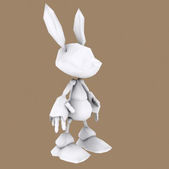5 hours ago, Plotnus said:I feel the asset that really gets me is animation and I have a feeling that this is a hard one to learn.
Yes, that one is the hardest it seems for everybody. One thing that compounds it is trying to mix and match animations with models. If you are gonna try out Blender, here's the list of things I would do first.
1) Learn Mesh work first. Master exporting to .fbx format from Blender. This is key to having models AND animations appear and function correctly in Unity. Just use basic shapes and scribbles to test that your meshes are importing into Unity without any weird rotations or transformations.
2) Figure out how to work with the Armature setups and Pose Mode in blender. Don't worry about attaching a mesh to it just yet. Open blender and delete everything, add in an Armature and go about some tutorials on animation from there. Any animations you make using a Humanoid(metarig) Armature in Blender(If exported correctly) should work with the Standard Assets ThirdPersonController setup, or any other standard player controller/Animator setup for Unity.
3) Combine the two.. Make a simple prototype humanoid character, add an armature. This is called Rigging.
Like I do everything, I always tried to tackle all 3 subjects at once, and in Blender that doesn't work well. There's just too much to the program to think that you can digest it all in one sitting.. Break it down into small parts and it will make WAY more sense.
And bookmark the links you find with all the handy hotkeys and basic function tutorials, you may have to return to them a few times.. ![]()
Good Luck!






